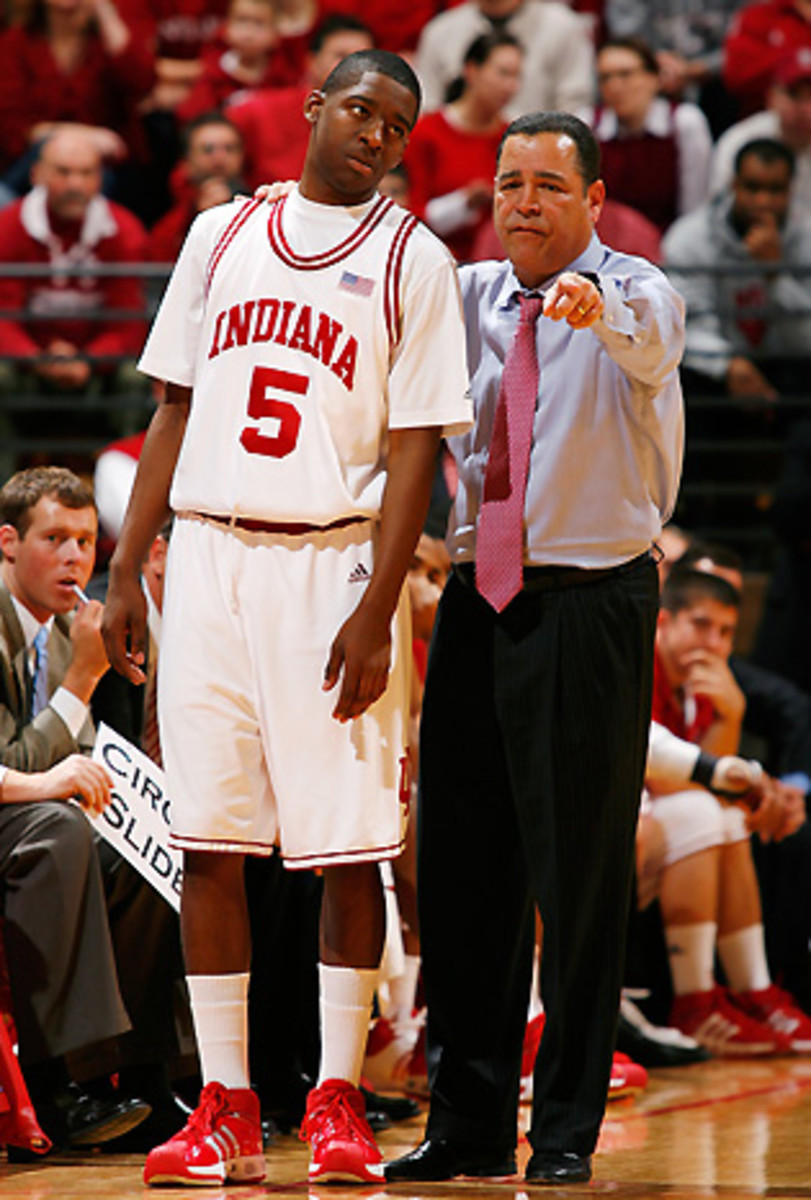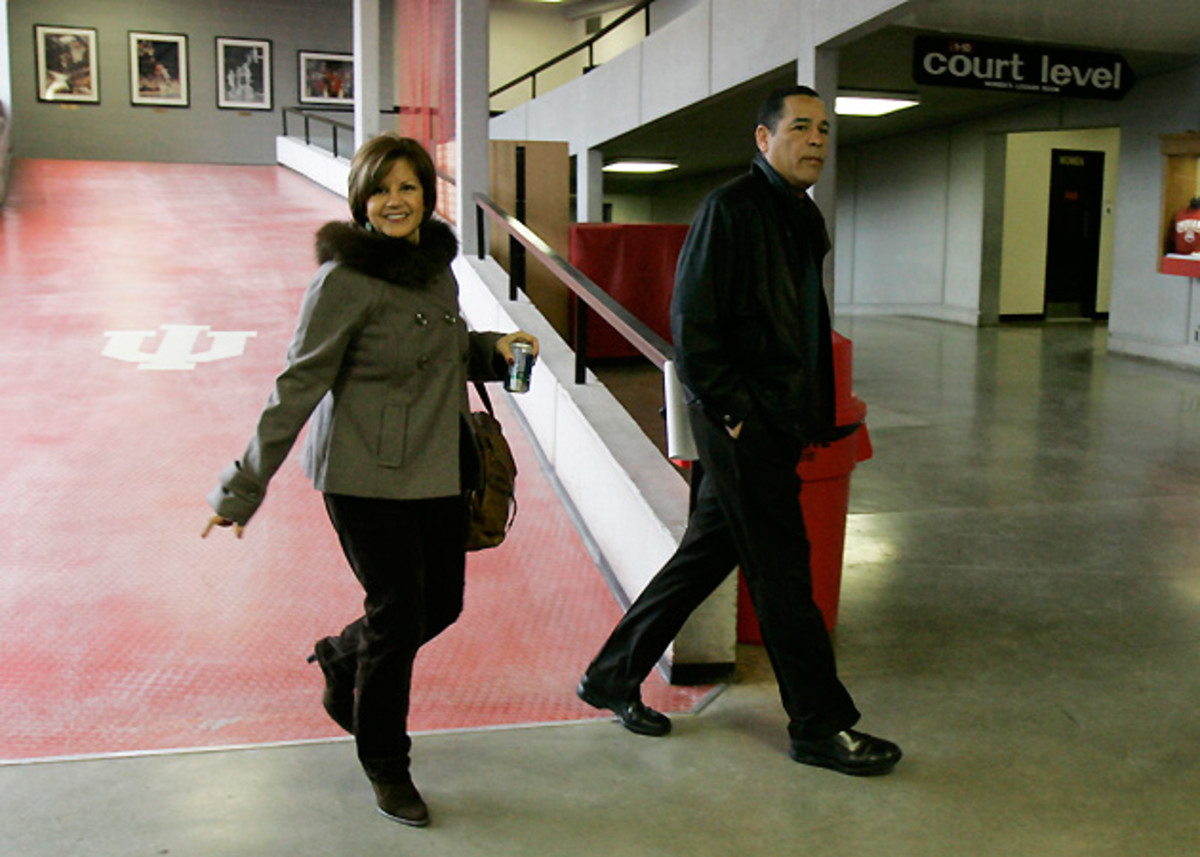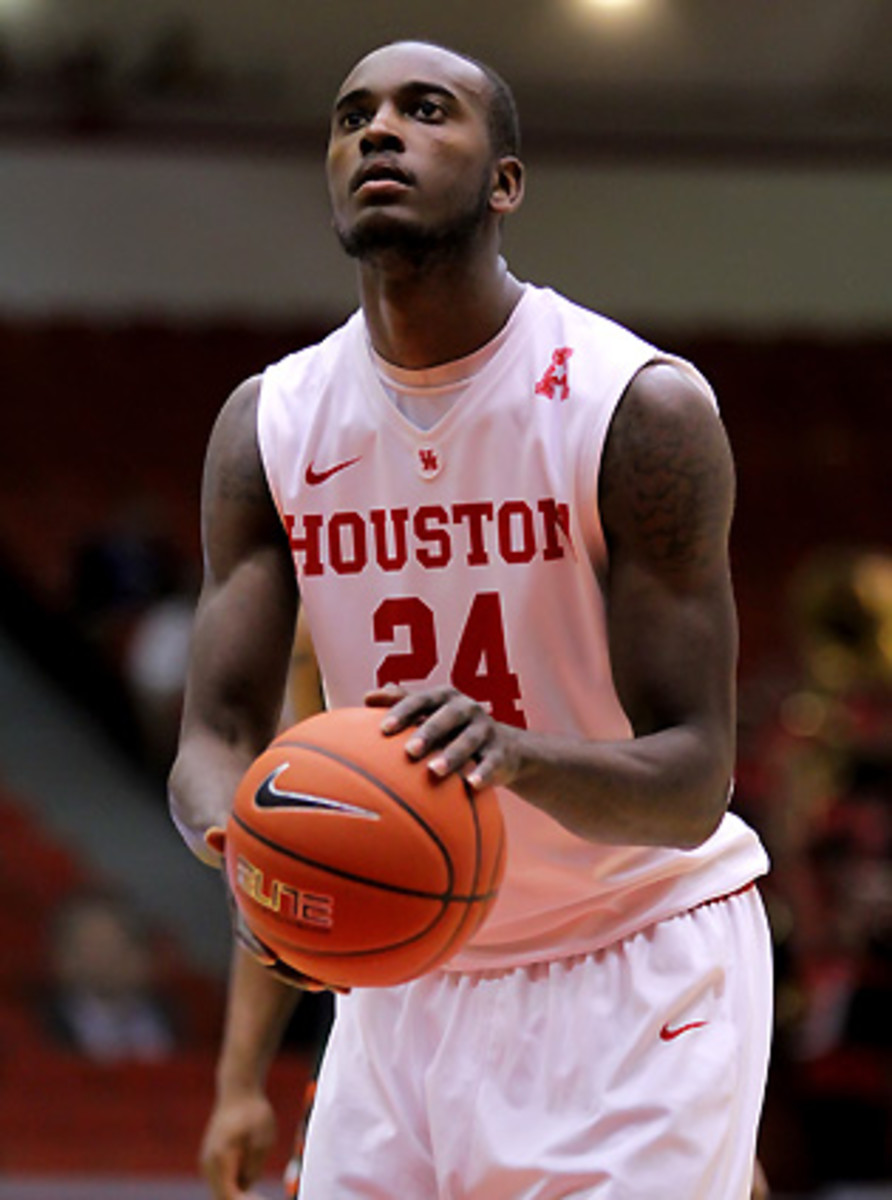Kelvin Sampson, Houston team up to restore a career and a program

HOUSTON -- In February 2014, the Houston Rockets were in Los Angeles to face the Lakers, and Rockets assistant Kelvin Sampson felt his life was about to change. So the former head coach at Indiana called a former high school coach, the man he calls his “professional rock”: His 84-year-old father, Ned.
Ned, who had spent most of the last eight years in bed as an invalid, was very ill and near death. He told his son that while the NBA was good for his career, he was a great college coach and needed to return to that level.
Before that conversation, the younger Sampson had no interest in going back to the college ranks. After being forced out at Indiana in 2008 and receiving a five-year show-cause penalty from the NCAA for recruiting violations, Sampson had carved out a nice career as an NBA assistant. Why would he return to college?
Ned passed away less than 18 hours after giving his son one last piece of advice. Two months later, Kelvin Sampson accepted the head coaching job at the University of Houston.
He gets emotional at recalling the story, but Sampson knows he is in the right place and made the right decision. He had wanted to become a head coach in the NBA -- he interviewed with the Charlotte, Detroit and Milwaukee but was passed over each time -- before finally deciding that he should “get back to his roots.”
• SETH DAVIS: Why Georgetown players wore 'I Can't Breathe' shirts, more
“I think my dad also felt like I would go back to college,” he says. “He had unbelievable common sense. He was gifted to know what to say and when to say it. That’s a gift. A lot of people mean well, but they just don’t say know to say it.”
For Kelvin Sampson, going back to school took more than common sense. It meant convincing Houston's administrators not only that he was a changed man after that five-year ban forced him into the NBA, but also that he could revitalize a Cougars basketball program that hasn’t been nationally relevant since the 1980s.
*****
A winter storm had chilled Bloomington, Ind., on the afternoon of Feb. 22, 2008. But the heat had been on Sampson for some time.
Just a week earlier, the NCAA said that he and members of his staff at Indiana were in violation of a now-defunct rule about making impermissible calls to recruits dating back to his time at Oklahoma. Of the 577 extra phone calls made by the Sooners' staff, Sampson made 233 of them. When he took the Indiana job in March 2006, he was barred from recruiting off campus and calling recruits during his first year. He and his staff then proceeded to make over 100 more illegal calls during that first season. The NCAA also accused Sampson of lying to investigators about the phone calling and failing promote an atmosphere of compliance for the program.

Despite those distractions, the 2007-08 Hoosiers were en route to the program's best season since 1993, beating Michigan State and Purdue at home in mid-February to improve to 22-4 and 10-2 in the Big Ten. Alas, the Feb. 19 victory over the Boilermakers proved to be Sampson’s last at Indiana.
“I knew something would happen eventually, but at the time all I did was think about coaching the team,” he said.
Three days later, Sampson rejected the initial terms from the university to step down. As he and his wife, Karen, walked out of Assembly Hall he turned to her and asked, “Well what do we do now?”
“We do what we always do: we go to Target,” Karen said.
So with Sampson’s coaching career and reputation in limbo, the two set off to the department store. Karen roamed the aisles shopping for DVDs and paper towels. Kelvin stayed in the car.
By the time Karen came back to their Chevrolet Yukon, Kelvin’s agents, Lonnie Cooper and Mark Carmony, had informed him that Indiana had increased the buyout offer for him to step down to $750,000.
“Take it,” Karen, his wife of 35 years, told him.
“He is such a fighter,” she says now. “He always puts things in compartments but I wasn’t fearful, because I knew that whatever happened, we would be all right.”
Sampson’s career at Indiana, which consisted of 45 victories in 58 games over just 23 months, was over. But Sampson wasn’t done with coaching and the NCAA wasn’t done with him or the school, slapping him four months later with a five-year show cause, basketball’s version of being put in coaching jail. The basketball program was hit with three years of probation and scholarship reductions but avoided a postseason ban.
Q&A: SMU coach Larry Brown discusses his storied career
“There were a lot of feelings: fear, anger, disbelief,” Sampson said. “To be honest with you, the entire ordeal was ridiculous.”
The day after he stepped down at Indiana, he received a call from San Antonio Spurs head coach Gregg Popovich, who told Sampson to join his staff.
Popovich and Sampson had worked together on the 2002 FIBA world championship team coached by George Karl and had stayed in touch. “I didn’t have time to sit around feel sorry or worry about a lot of other things,” Sampson said. “It was time to move on.”
Sampson spent the next four months observing as a paid consultant and learning the ins and outs of management from Popovich. After his stint with the Spurs, he joined Scott Skiles’ Milwaukee Bucks staff for three years and moved to the Rockets in July 2011.

*****
In the spring of 2014, Mack Rhoades began looking for a coach at Houston to replace James Dickey, who had resigned after a 17-16 season. Rhoades, the school's vice president for intercollegiate athletics, wanted someone who could bring the program back to national relevance. He didn’t just want the Cougars to get back to the NCAA tournament for the first time since 2010 -- he wanted them to compete to win the school's first national title.
Houston does have a rich and storied basketball history, having been to five Final Fours. But the days of Elvin Hayes and "Phi Slama Jama” are a distant memory. The Cougars have been to two NCAA tournaments in the past 22 years and haven’t advanced to the Sweet 16 since 1984, when they lost the national championship game for the second straight season.
• MORE CBB: Kaminsky leads Wooden Watch; Harrell rises
During the interview process, Sampson explained to Rhoades and president Dr. Renu Khator what happened at Indiana and why he would be more successful at Houston. Undeterred by his past, the administration handed Sampson a five-year contract worth $1.1 million a season, which includes heavy paybacks to the university should he leave for another college or NBA job. Rhoades and Khator’s directive to Sampson was simple: graduate our student-athletes, do things the right way and win.
Sampson discovered plenty of challenges in his first month on the job, but his first priority was the roster. Five players, including two of the team’s top contributors from last season, forward TaShawn Thomas (15.4 points and 8.1 rebounds in 2013-14) and guard Danuel House (13.6 points and 5.3 rebounds) asked for their release once Dickey left and before Sampson emerged as a candidate.

Wanting an assessment of the team he had to work with, Sampson called a team meeting. Five players -- LeRon Barnes, Adam Drexler, Mikhail McLean, Jherrod Stiggers and L.J. Rose -- showed up.
“Once we (the coaching staff) saw our team, we realized we were in trouble,” Sampson says. “[But] players transferring wasn’t a problem systemic to the University of Houston, it’s a problem in college basketball. Someway, we had to put a team on the floor. “
Sampson and his staff, which includes his 29-year-old son Kellen, had to act quickly to fill out the roster.
Using connections from all over the sport, Sampson and his staff brought in eight new players over the next two months. One was guard Ronnie Johnson, a two-year starter at Purdue who is sitting out this season due to NCAA transfer rules. Another is former McDonald’s All-American Devonta Pollard, a 6-8, 200-pound wing who left Alabama in 2013 after being charged with conspiracy to commit kidnapping in a plot that saw his mother sentenced to 25 years in prison.
“I am grateful to be here," Pollard says. "It’s unbelievable. He is unbelievable. I can’t even describe it. Coach just wants us to play hard and give maximum effort and 40 minutes of toughness."
“We are coaching a bunch of kids that in some ways no one wanted,” Sampson says. “Karen calls them my ‘pound puppies.’”
*****
It’s clear that the attitude toward basketball at Houston is changing, however slowly. A new $25 million practice facility is in the works, and Khator says the school will decide in the next three months if it will renovate or tear down its home arena, 45-year-old Hofheniz Pavilion.
In the Cougars’ home opener against Morgan State on Nov. 22, the crowd was listed at 3,058 but was realistically around 1,000. Houston played fast and tough, running up and down the court and diving for loose balls in a 72-57 win.
Power Rankings: The Jah-Providers, Utah's secret advantage, more
The next day at practice, the coaching staff sported T-shirts that read “Toughest Team Wins.” Kellen Sampson was the most vocal coach that day, screaming for the players to hustle during a fast break drill. Then the elder Sampson abruptly took over, demanding his players to give more effort. He had his eye on one player in particular: Danrad “Chicken” Knowles, a lanky 6-10, 190-pound sophomore forward from Nassau, Bahamas.
“Damn it, Chicken.” Sampson says. “It takes five people to play their a---- off to make a team. I don’t want to be your friend. That’s not my job. Don’t be soft, son.”
Chicken was instructed to watch the rest of the team from the sideline. Sampson had made his point: If a player doesn't give enough effort, he won't be on the court. Suddenly, the drills were done with more urgency, the rebounding got more intense and the talking on the defensive end got louder.
“That’s what it is going to take for us to win ballgames,” Stiggers, the team’s third leading scorer, said. “We need that support. This team is extremely close, so we are going to need to play together to make an impact in this league.”
Sampson’s “pound puppies” are off to a 4-1 start, but they will face a significantly tougher schedule in league play. The Cougars were picked to finish seventh this season in the 11-team American Athletic Conference. The AAC has defending national champion Connecticut, and boasts NCAA tournament regulars like Cincinnati and Memphis, as well as a rising club in SMU. But Houston isn't tempering its expectations. “If Connecticut can win a national title, so can we,” Rhoades says.
The headline “A New Era Begins" -- accompanied by a picture of Sampson, front and center, surrounded by five of his players -- greets visitors to the team’s website. At 59 years old and with 429 wins in 22 years as a college head coach, Sampson finds himself in a remarkably similar situation as many of his players: looking for a chance to make up for past mistakes and help restore the glory of a once-great basketball program.
“I don’t know how this story is going to end," he said. "Maybe it is about redemption, I don’t know, but then again, we all make mistakes. But it’s not about wins and losses right now, it’s about culture, it’s about getting kids to play the right way, and establishing a toughness that hasn’t been here for a while.”
